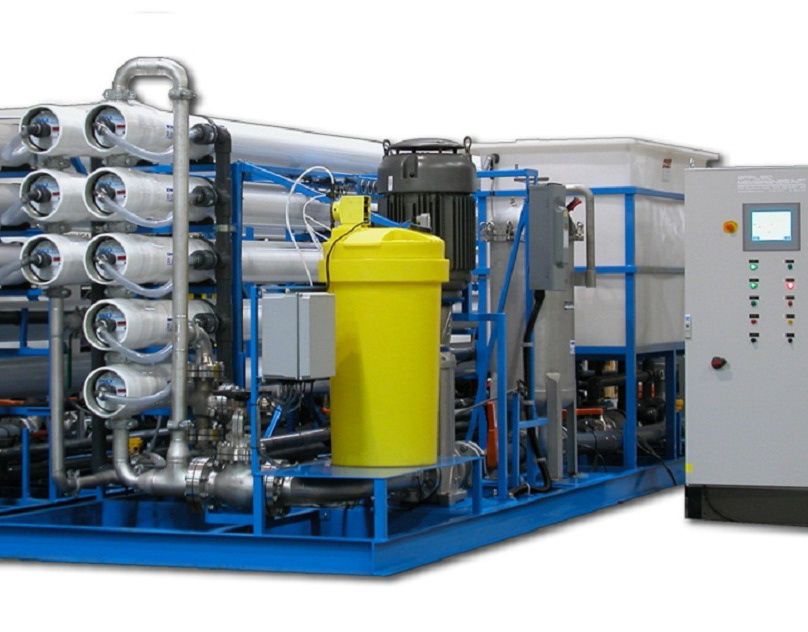
In the world of industrial water purification, commercial reverse osmosis (RO) systems are champions for clean, usable water in a wide range of applications. From food and beverage production to pharmaceutical manufacturing, understanding these systems is essential. This article dives deep into the concepts and processes behind commercial RO systems, explaining their mechanisms and advantages.
Understanding Reverse Osmosis
Before exploring the specifics of Commercial Reverse Osmosis System, let’s grasp the idea of reverse osmosis. Osmosis is a natural phenomenon where a solvent (typically water) moves across a semi-permeable membrane from a less concentrated area (in terms of dissolved solids) to a more concentrated area. Commercial RO systems reverse this natural flow by applying pressure to the concentrated side of the membrane. This forces pure water molecules through the membrane, leaving behind dissolved salts and other impurities.
Components of a Commercial Reverse Osmosis System
A commercial RO system is made up of several key parts that work together to purify water:
Pre-filtration:
Before water reaches the RO membrane, it goes through pre-filtration to remove larger particles, sediments, chlorine, and other substances that could harm the membrane. This step extends the membrane’s lifespan and improves the RO process’s efficiency.
Commercial Reverse Osmosis Membrane:
The heart of the system is the commercial RO membrane, a thin, semi-permeable barrier that allows water molecules to pass through while blocking dissolved solids, contaminants, and microorganisms. The effectiveness of the membrane’s filtration depends on its pore size and material composition.
Pressure Pump:
Commercial RO systems necessitate a pressure pump to maintain the high pressure required to push water through the membrane against the natural osmotic pressure. This pump guarantees efficient water filtration and helps achieve the desired purity levels.
Post-filtration:
Once water passes through the commercial RO membrane, it undergoes post-filtration for further polishing and quality enhancement. This stage usually involves additional filters like activated carbon filters to remove any remaining tastes, odors, or residual contaminants.
Storage Tank:
After filtration, the purified water is stored in a pressurized storage tank, ready for use. This tank ensures a consistent supply of clean water even during periods of high demand.
The Purification Process:
Water Intake and Pre-treatment:
The process starts with water intake from a municipal supply or a natural source. This water then undergoes pre-treatment, which includes filtration through sediment filters to remove large particles, followed by activated carbon filtration to remove chlorine and organic compounds that could damage the RO membrane.
Commercial Reverse Osmosis Filtration:
Once pre-treated, the water is pressurized and forced through the commercial RO membrane. The membrane selectively allows water molecules to pass through while rejecting dissolved salts, minerals, heavy metals, and other contaminants. This process results in highly purified water known as permeate.
Concentrate Disposal:
Alongside the purified water (permeate), the commercial RO process also generates a concentrate stream containing the rejected contaminants. This concentrate, also known as brine, is typically discharged or sometimes recycled depending on environmental regulations and feasibility.
Post-treatment and Distribution:
The permeate from the RO process undergoes post-treatment to ensure its quality meets the required standards. This may involve remineralization to improve taste and pH adjustment before the water is distributed for use in various applications such as drinking water, pharmaceutical processes, food production, and industrial applications.
Applications and Benefits of Commercial Reverse Osmosis Systems:

Commercial reverse osmosis systems are employed across various industries where water purity is critical. Here are some key advantages:
Quality Assurance:
Commercial RO systems produce high-quality water free from contaminants, guaranteeing product consistency in industries like pharmaceuticals and electronics manufacturing.
Cost-Effectiveness:
By reducing reliance on bottled water or traditional purification methods, commercial RO systems offer a cost-efficient solution for large-scale water purification needs.
Environmental Impact:
Compared to other purification methods, commercial RO systems consume less energy and produce less wastewater, making them a more environmentally friendly choice for water treatment.
Versatility:
From desalination projects to producing ultrapure water for laboratories, commercial RO systems effectively adapt to diverse water purification challenges.
Final Thought:
In conclusion, commercial reverse osmosis systems are at the forefront of water purification technology, providing reliable and high-quality water for industrial applications. Understanding the intricate workings of these systems—from pre-filtration to post-treatment—highlights their significance in upholding water purity standards across various sectors. As industries continue to prioritize sustainability and efficiency, the role of commercial RO systems will only grow, ensuring clean water remains accessible and safe for consumption and industrial use alike.

